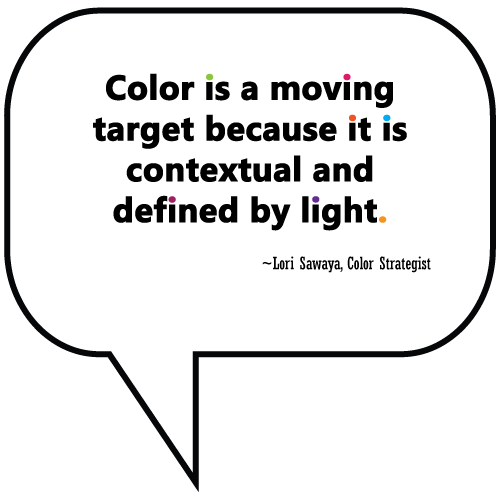Consumer Reports published another article about quality of interior paints. As many of my regular readers know, for over a decade I’ve commented on forums as a paint and color expert. The debate about “what is the best paint” is ongoing. Have to note, however, that the complexion of the debate has changed. There was once a time when years of experience working with a particular brand or grade meant something. I don’t think it means much anymore because like Consumer Reports mentions in the article, formulations are constantly changing. This new, accelerated mode of reformulation across the paint industry can be attributed to many factors. Keeping up with environmental standards is just one example.

Color is a constantly moving target (one of my favorite mantras). I’m thinking we can now say something along those same lines about paint. So, what are you supposed to do? How does the average consumer “Get Color Right” but also find the right brand of paint for their project and budget?
First, seek out the professionals. Architectural Color Consultants like me are a good resource. Also your local, independent paint store. The ones that have been around for many years have seen just about everything and are living this reformulation era on a daily basis. Professional paint and color opinions are more valuable now than ever before.

Second, I do like the advice Consumer Reports shares in the last paragraph of the article about testing. I would amend that to include buying quarts in the brand, grade and sheen you want to use to paint the whole room. Quarts are a bigger investment than test sample sizes. But paint sample sizes are not always “real” paint. Shocking, right? It’s true that in order to keep those sample sizes affordable, some paint manufacturers omit performance properties. They leave enough of the good stuff so you can test color, but the formulations of sample sizes won’t hold up over time. Lacking performance properties means there’s a good chance the paint will fade and degrade.
Investing in quarts gives you the opportunity to not only test colors, but also the sheen and paint quality. If you don’t like using the paint to make samples, will you want to paint a whole room or house with it?

I agree that testing three colors is a good guideline. That’s why I packaged Swatch Right™ in threes. There are three of everything in the Swatch Kit; three paint-peel-and-stick color sample decals, three work mats, three brushes.
Consumer Reports suggests purchasing samples of the color you think you want plus lighter and darker versions. That’s not always easy to do which is why I disagree with this part of their paint color samples suggestion.
Three is a good number because it provides you the opportunity to test three colors in your space and also compare the colors to each other. You might want to compare on various attributes like hue or intensity, not just light vs. dark. So don’t get too wrapped around the light vs. dark thing unless that’s a key color attribute you want to focus on.
Take your time selecting the colors you want to test. Don’t choose test colors randomly. Put some strategy behind it so you feel good about investing in those three quarts of paint color samples. Lastly, invest in your color sampling tools too. Whatever you do, do not paint samples directly on the wall or default to a board of some kind just because it’s white. The tool that will help you “Get Color Right” is Swatch Right™. We ship Swatch Kits daily and average delivery time across the U.S. is three days.
